Monday Morning Update 6/14/10
From Nikki Sevven: “Re: Eclipsys. I’ve talked to a lot of clients and they all think the Allscripts acquisition is great. The turnover in management at Eclipsys has been a big concern and their perception is that Allscripts has better leadership and execution. Also, the lack of a good ambulatory product has taken Eclipsys off a lot of hospital short lists. Eclipsys users believe the inpatient products are good, but the company has been lacking an end-to-end strategy that could compete with Epic.” Despite my initial cynicism and concerns about product overlap, I’m starting to take cautious sips of Glen’s Kool-Aid after talking to some Eclipsys customers. Everybody knew that Eclipsys was struggling and someone would have to buy them eventually, so it’s not terrible news that it’s now and it’s Allscripts. The road is full of potholes, though, and Allscripts management will be tested while Wall Street watches intently to see if performance matches hype. There’s still a rumor that Microsoft will swoop in post-merger and buy the whole thing, which would not be good, but I wouldn’t worry about it yet. Eclipsys has some good products in Sunrise, the old EPSi, the old Bond Clinician, etc. but like Nikki says, its revolving door management has always been suspect and its execution clumsy. Any outcome was likely to have been painful to Eclipsys customers in some way, but this one’s probably the least so since Allscripts needs both the customer base and the products for its own success.
From Lars Poker: “Re: Allscripts. Glen pulled off one heck of a coup. He bought his company back and got Eclipsys in the bargain!” He sure did. Glen’s got some shrewd board room moves, which was evident in the equally complex and multi-player Allscripts-Misys merger. Everybody seems to miss that important point: deporting Misys will help Allscripts immensely. Another often-missed point: Epic was stifling the prospects of both companies since nobody does outpatient-inpatient integration better, so this was pretty much the only option on the table to develop a counterattack before hospitals lock in with their long-term dance partners. I still think it’s late in the HITECH game to be trying to create an Epic competitor, but we’ll see. I’ve said it before: Judy Faulkner was either darned lucky or darned smart to start Epic on the outpatient side and then move into inpatient, which the good old vendor boys had great fun with until she starting beating them like a drum.
From UKnowMe: “Re: HISEA. Do you know who the members of the Healthcare Information System Executive Association are?” I admit that I hadn’t heard of it. Some Googling turned up the fact that it’s 30 or so CIOs who meet twice a year for some unnamed purpose (whatever it is, I bet vendors are buying the drinks). Those whose names turned up include Marc Probst from Intermountain, Bert Reese from Sentara, and Bill Montgomery from HSHS. Maybe someone will tell me more.
From The PACS Designer: “Re: MeeGo. TPD has been using a Windows 7 netbook for awhile and noticed that a new application, MeeGo for netbooks, has been announced. MeeGo v1.1, whose development platform is specifically targeted toward netbooks, will be released in October and will include support for touch-based devices.”
Listening: Ride, British psych/guitar pop styled after My Bloody Valentine. Long defunct: they broke up the band in 1995, but it lives on in the digital promised land.
Rob Sumter is named COO/CIO of The Regional Medical Center at Memphis (TN).
Inga was talking to an A-list CIO and big Allscripts customer about the merger news. She asked if he got a heads up from Allscripts. He said no — the first he heard of it was from HIStalk. Inga was amused, I was pleased.
Speaking of Allscripts, Chief Innovation Officer Stanley Crane dropped me a note in response to a reader’s question about the company’s remote access solutions. Stanley says Allscripts Remote covers several mobile devices, including iPhone, BlackBerry, iPad (just released this week), and Android (hitting the street in a couple of weeks). These connect to Allscripts Enterprise EHR and Professional EHR, with connections to MyWay and Misys EMR being tested now. They use the connection called UAI (University Application Integrator) that he and I talked about at length in our May 2007 interview, which I enjoyed enough to want to do it again (coming soon).
We heard that some Eclipsys customer CIOs and CMIOs convened a meeting last week with Allscripts to discuss integration of the two vendors’ products (they didn’t know about the acquisition, obviously, but talk about a timely thought!) I heard that Steve O’Neill, VP of IS at Hartford HealthCare, was there, so I asked him about it. They talked about using the open integration tools (UAI and Helios) to help hospitals with their integration challenges in creating a complete acute care and ambulatory solution that appears seamless to the user, with several of the hospitals there (including Steve’s) volunteering to be pilot sites. He was happy with the result, obviously even more so now that the acquisition has been announced.
Speaking of which, I asked Steve what he thought about the acquisition. He says Hartford is excited about the news and anxious to continue working with Allscripts on the integration. Obviously he likes that option much better than dumping Eclipsys and starting over. The hospital is also building an open source HIE using Misys Open Source Solutions (MOSS), which is another key corporate integration project. That’s a hugely important vote of confidence: Hartford has used Eclipsys Sunrise for years, and if I remember right, was the development site for the Premise throughput product that Eclipsys bought.

Congratulations to our CIO blogger par excellence Edward “Ed” Marx of Texas Health Resources, named by Texas Governor Rick Perry as chair of the Texas Health Services Authority Corporation. That group is coordinating development of an electronic health information infrastructure for the state.
Thanks to the folks at MedPlus, a new Platinum Sponsor of both HIStalk and HIStalk Practice. The Quest Diagnostics company offers innovative interoperability solutions that include the Centergy suite of integration solutions (community sharing of clinical data, including data exchange, ambulatory EHR, clinical portal, patient portal, and document management), ChartMaxx document management and imaging (2009 Best in KLAS in that category), and the Web-based Care360 suite that’s used by 70,000 practices, including modules for Labs & Meds, ePrescribing, EHR, and Mobile. Fun facts to know and tell: MedPlus software has connected 160,000 doctors, 100 EMR vendors, several big HIEs, 100 hospitals, 300,000 administrative users, and a total of over one million clinicians. As if that weren’t enough, they are now much-appreciated sponsors of a couple of marginally interesting blogs that I’m too modest to name, for which Inga and I thank them.
Here’s Aaron’s word cloud of the proposed Meaningful Use rule. I think the two biggest ones pretty much say it all.
I took some scorn from a couple of readers when I truthfully said that in the three hospital systems I’ve worked for that were choosing a clinical system, doctors and nurses didn’t get their top choice in any. The results of last week’s poll suggest that it’s not just me: around 38% of respondents say the medical staff and nurses have the most influence, but over 55% said IT or Finance are the primary decision-makers. New poll to your right: who will benefit most from the proposed acquisition of Eclipsys by Allscripts? I know we’re talking a lot about that, but acquisitions always make conversation (unless you work at either company and are sweating over your employment prospects, always an ugly by-product of corporate copulation).
I was chatting with an acquaintance from Telus Health Solutions, of which I’m rather a fan since its Oacis solution comes highly recommended by Frank Clark of MUSC (they use the physician portal and are rolling out a new Oacis Health Data Warehouse). Oacis is up to 200 sites now, but what I found interesting was that the company let customers convince them to create a high-availability option for its Oacis Clinical Data Repository. They did, but booked zero sales as a result: the base product requires no archiving steps and never goes down, so nobody felt the need to buy a specific HA version. I’d say that’s an expensive but effective testimonial.
Colchester East Hants Health Authority (Nova Scotia) uses Access Intelligent Forms Suite to barcode forms scanned into Meditech Scanning and Archiving, printing admissions forms packets and pre-filling the forms from Meditech.
University of Virginia Health System will switch its clinics to Epic in September, the first phase of its $122 million project. Inpatient goes up in March of next year.
The Clinical Pharmacology drug information database is now available for smart phones, with a available.
Dr. Sam and the Managed Care Blues Band (Sam Bierstock, MD) has a new CD called Healthcare Reform Blues. I’m head-bobbing to the title track. Sam says it’s free to anyone who can prove they’re in the country illegally.
Inga and I frequently make fun of badly written and no-news press releases, Web sites with spelling errors, and poorly prepared interview subjects. We’re happy to offer you a solution for avoiding our snarky wrath: NPC Creative Services, LLC, which has joined our merry band as an HIStalk Platinum Sponsor. The company offers a full range of media and PR services, specializing in working with healthcare IT and technology vendors. They create media relations programs, write press releases and white papers, and handle trade show media relations. They also develop content such as product profiles, presentations, and newsletters. Some of their work is described here. Inga and I hear from PR people occasionally since we are unqualified pseudo-journalists who somehow got on various contact lists — we are much more receptive to professional, fun, and skilled creative types who know what they’re doing (Mitch and Liz Roop from NPC fit that description). I’m not saying we’ll pay more attention to your press releases just because NPC writes them better than most, but I’m not saying we won’t, either. Thanks to NPC for supporting HIStalk. Maybe we’ll convince them to do a PR campaign for us.
Castlight Health, the former Ventana Health Services that was started by RelayHealth founder Giovanni Colella and HHS CTO/athenahealth co-founder Todd Park in 2008, raises $60 million from investors, adding to its previous $21 million. One of those investors is Cleveland Clinic. The company’s Web site works with companies to provide their employees with views of their health benefits and costs, highlighting out-of-pocket costs and steering them toward cost-saving opportunities. It lets patients search for medical providers by price, which the company finds by reviewing explanation of benefits forms. Todd told me about it when I interviewed him (still one of my favorite interviews) in September 2008, or at least I assume it was the same project even though he referred to it as Maria Health:
I have recently got involved in another venture which was mentioned in the Washington Times article, called Maria Health, which I’ve started with Giovanni Colella, who was CEO of RelayHealth and then Sapient before that. Our venture capitalist is Bryan Roberts of Venrock, who is one of the lead VCs behind athena. It’s actually a consumer-oriented company. It’s super duper early so I can’t really get into specifics at this point, but generally speaking, it’s a company that’s seeking to take an athena-like approach to helping healthcare consumers navigate an increasingly complicated healthcare system. It’s got a great team, veterans of athenahealth and Yahoo who are part of it. It’s off to a great start. It’s too early to talk a lot about, but it’s been a ton of fun for me to learn more about the consumer space.
The VA announces the 26 winning ideas in its IT innovation competition. It’s hard to evaluate them given only their titles, but some are easy to figure out: including patient pictures in CPRS, using touch screen software for nurse triage, and rolling out wireless and hands-free voice communications. And speaking of Todd Park, he was one of the judges.
Catholic Health Initiatives announces a $1.5 billion project to upgrade clinical IT in its 72 hospitals, planning to hire at least 200 people, most of them to be based in Denver. Key partners are Cerner, Meditech, and Allscripts. if you ever wanted to move to Denver, this is a once in a lifetime opportunity.
Informatics Corporation of America will host a Thursday webinar called Five Key Elements to a Successful Clinical Information Implementation. I’m thinking there should have been “System” before “Implementation”, but I’ll go with the announcement’s wording.
The Daily Mail documents conditions in the Chinese plant (aka “the i-Nightmare factory”) that makes components of the iPhone and other consumer devices and which has had a rash of employee suicides. The company’s response: they brought in monks to exorcise evil spirits, installed nets around the dormitories the employees were leaping from, appointed “spotter teams” to watch the employees and ship troubled ones off to a mental hospital involuntarily, and forced employees to sign a contract saying they won’t kill themselves and giving up their legal rights if they do (tick, tock). But as I always caution when talking about a so-called sweat shop: ask the employees before unleashing the moral outrage whether you’re doing them a favor by having their employer shut down. Sometimes a sucky job is better than none.
Sad: a patient being being transported by ambulance dies when a software glitch causes its onboard oxygen system to fail.
Starting Monday, all Virginia Beach (VA) ambulances will carry a tablet PC that allows them to communicate with any Sentara hospital. They say it’s the first program of its kind.
Five California hospitals are fined $675,000 for electronic privacy violations, with UCLA’s Ronald Reagan Medical Center getting hit with a $95,000 penalty for employee snooping in Michael Jackson’s records.
Strange: a woman with an old shoulder injury and no insurance can’t get a specialist to see her, so she shoots herself in the shoulder in hopes of getting treatment. It didn’t help: the local hospital fixed the wound, but left the old injury unrepaired.




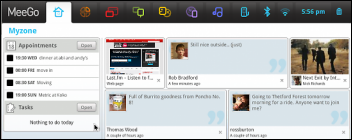





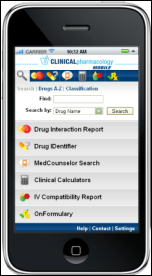

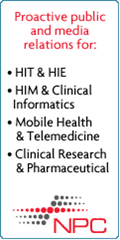







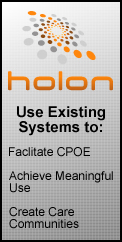
















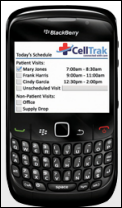
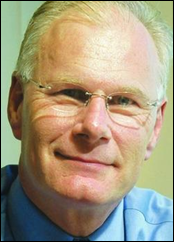











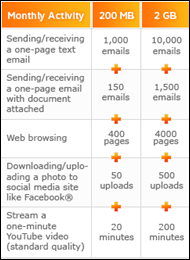









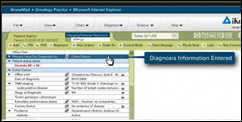




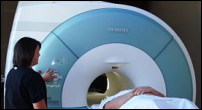
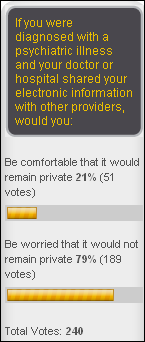
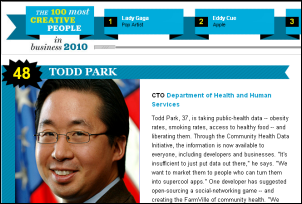










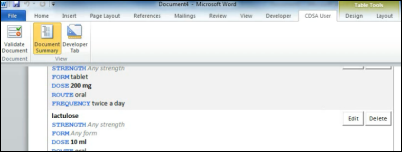

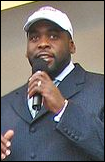







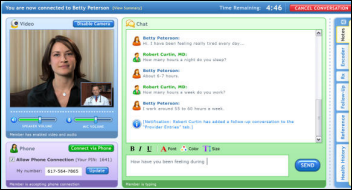
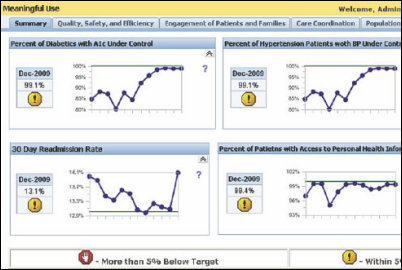






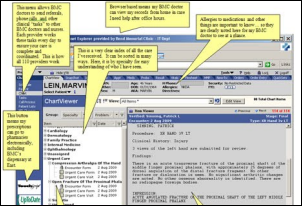

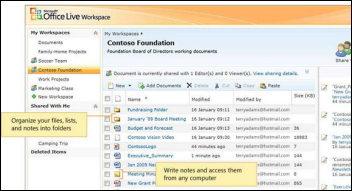
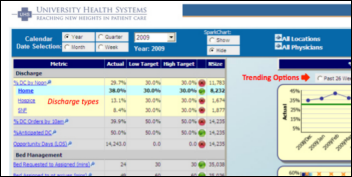







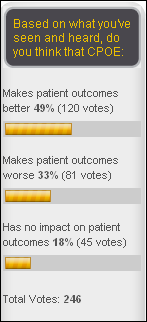





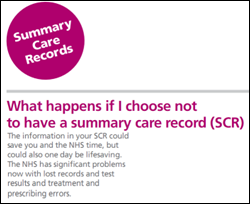

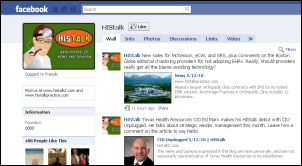
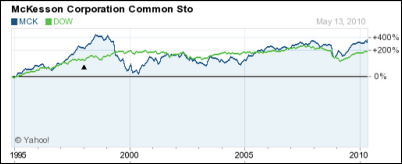
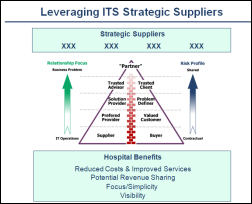






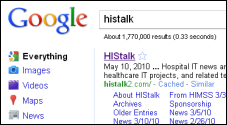
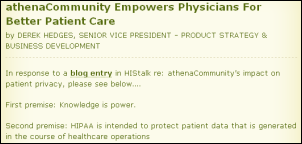


















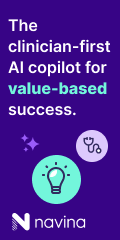













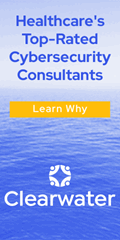










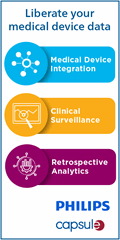

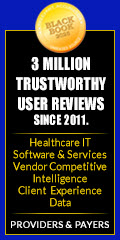









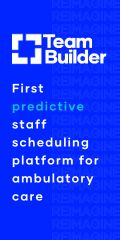















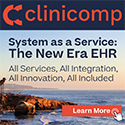








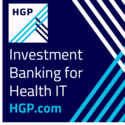




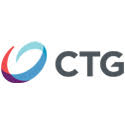
Would have liked to have seen more about Expanse here. Would like to see more about it on this site…